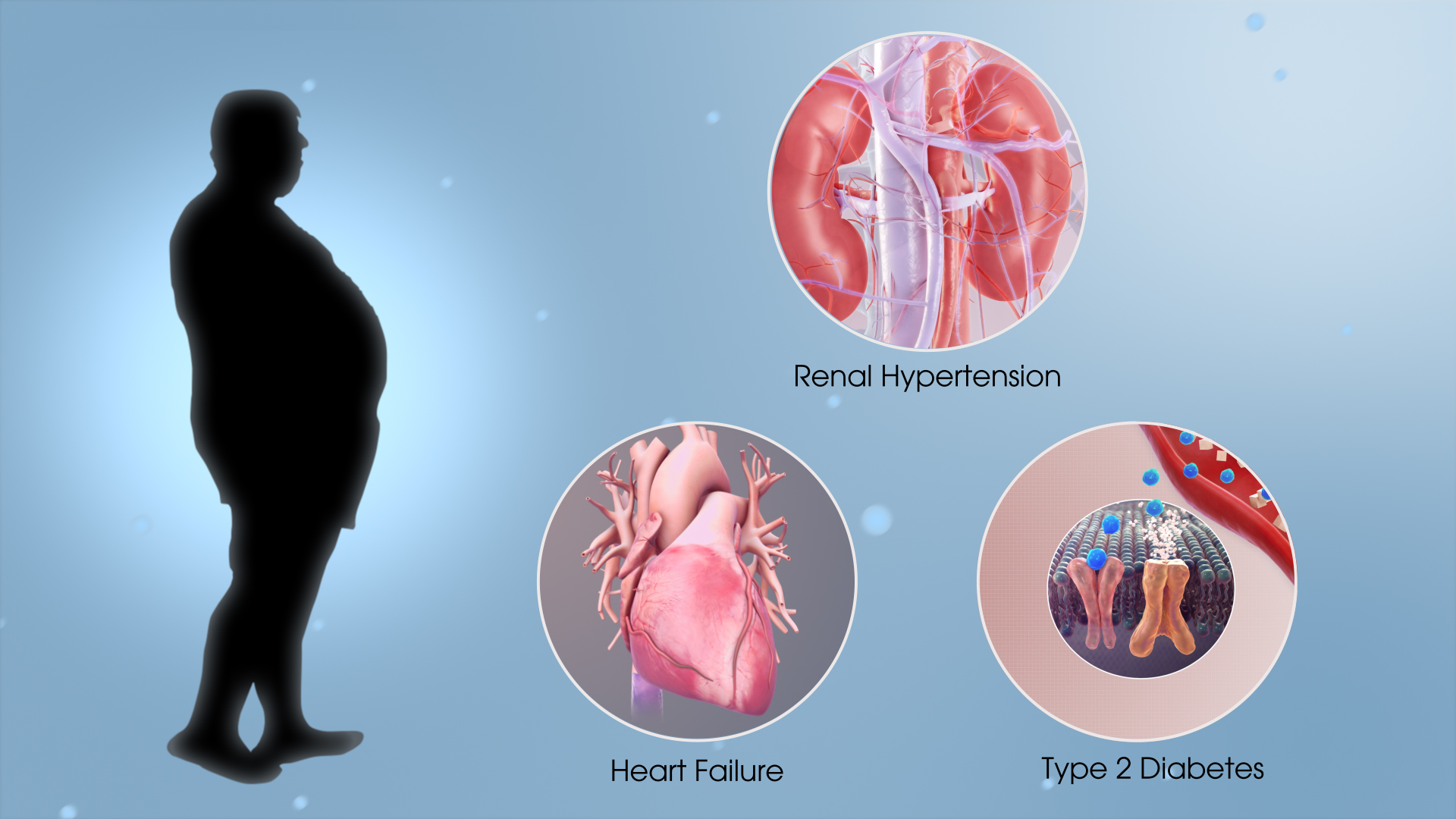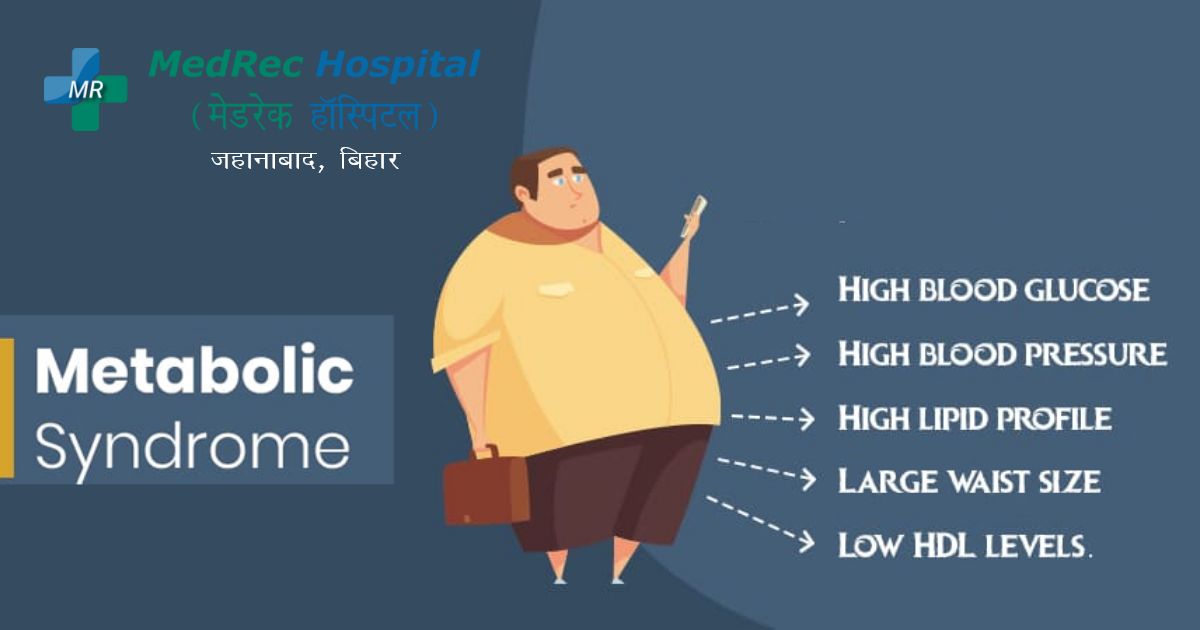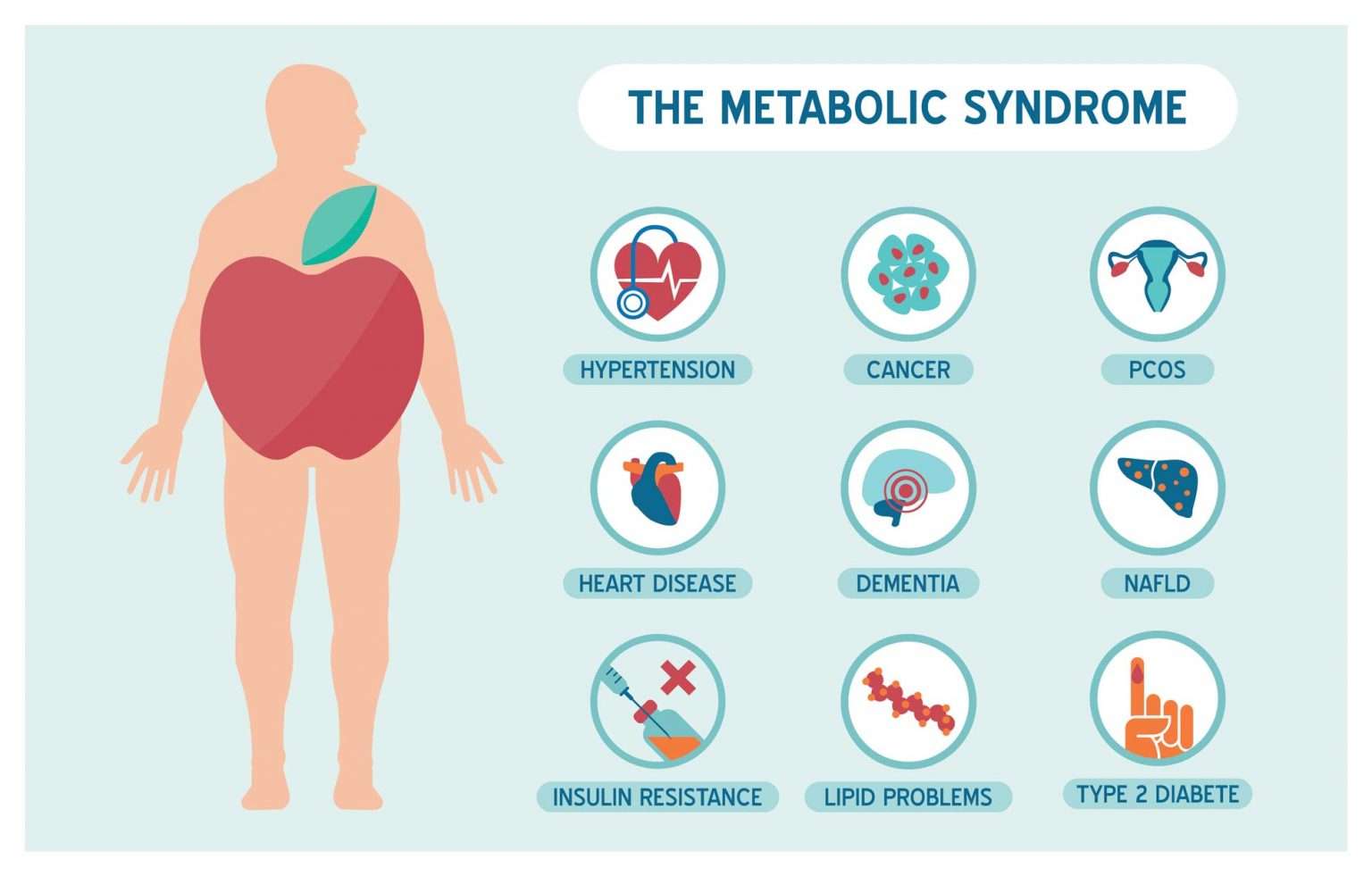What is metabolic syndrome? What are the symptoms? What are the indicators that can be checked and judged? Why is abdominal obesity also one of the symptoms of metabolic syndrome? ~ Invite our expert, Dr. Chen Weiqian of Formosa Biomedical i-Medical Health Clinic, to take you to understand what metabolic syndrome is? How to prevent the occurrence of metabolic syndrome, as well as the five major indicators of metabolic syndrome~ ❐ People with metabolic syndrome have a much higher risk of disease than the average person!
❐ People with metabolic syndrome have a much higher risk of disease than the average person!
What is metabolic syndrome? Metabolic syndrome is not actually a disease, but a group of risk factors, which are some signs that predict disease. People with metabolic syndrome have more than twice the risk of heart disease and stroke than the average person, and the risk of cancer will increase by at least 50%. More than half of the top ten causes of death in Taiwan are related to metabolic syndrome.
❐ Is the growing belly related to metabolic syndrome?
Eat more and more in winter, and find that your belly is getting bigger? Worried about the increase in waist circumference? Abdominal obesity is related to certain diseases! ❐ The indicators of metabolic syndrome are these!
❐ The indicators of metabolic syndrome are these!
Metabolic syndrome has no symptoms and does not make you feel uncomfortable, but it actually increases the risk of many chronic diseases. For example, the risk of myocardial infarction increases by 2 times, the risk of stroke increases by about 2.76 times, and the risk of diabetes increases by 6 times.
In addition to these cardiovascular and cerebrovascular metabolic problems, metabolic syndrome makes the body more prone to inflammation, and inflammation in the body causes cell lesions, so it increases the risk of cancer by more than 50%.
The criteria for determining metabolic syndrome are "5 signs". Even if we have these 5 signs, our body will not have symptoms, but we can still use these 5 signs to simply check whether we have metabolic syndrome. If we meet 3 of the following 5 items, or more than 3 items exceed the standard, it is considered metabolic syndrome:
1. Blood pressure: blood pressure exceeds 130/85 mmHg.
2. Blood sugar: fasting for 8 hours to test blood sugar, more than 100 mg/dl.
3. Triglycerides: more than 150 mg/dL.
4. High-density cholesterol (HDL-C): Good high-density cholesterol for men is less than 40 mg/dl, and for women is less than 50 mg/dl. High-density cholesterol is good cholesterol, which is the scavenger of blood vessels. If the good cholesterol is too little, the function of clearing blood vessels becomes poorer, and it is easier to accumulate some bad things, which can easily cause stenosis and hardening of blood vessels.
5. Abdominal obesity: This is the most important indicator, because when the abdomen is obese, the other four indicators are likely to be abnormal. The waist circumference of men should not exceed 90 cm (35 inches), and the waist circumference of women should not exceed 80 cm (31 inches).
❐ These bad habits are likely to lead to metabolic syndrome
Why does metabolic syndrome occur? Most of them are related to the current lifestyle. Modern people are very busy at work, have no time to exercise, often sit for a long time, and eat more. The current diet is more refined. Maybe they don’t eat enough vegetables, consume more starch, and eat too much oil. Gradually, they become obese in the abdomen, which makes it easier to get metabolic syndrome. Then sometimes they feel that their physical strength seems to be a little worse, because there are some problems with the body’s metabolism.
1. Sitting for a long time without exercise: Office workers who often sit for a long time, people who don’t exercise enough, and people with high pressure are more likely to have metabolic syndrome. Because under high pressure, we are very tired and don’t want to exercise; and under high pressure, sometimes we want to eat something to relieve pressure.
2. Poor sleep quality: People with high pressure sometimes don’t sleep well at night, so their metabolism will become abnormal.
3. Drinking: Work may require drinking for social occasions, and alcohol will also increase our abdominal fat and cause abdominal obesity.
4. Smoking: Smoking will allow a lot of toxins to enter our body, and these toxins can easily cause inflammation in our body, and inflammation in the body will promote the effects of metabolic syndrome.
❐ Is metabolic syndrome related to insulin resistance?
What is insulin resistance? Every time we eat starch, starch will be broken down into glucose, and glucose will enter the cells of our body to provide us with energy. But glucose cannot enter the cells of our body at will, because if too much glucose enters the cells, the concentration of glucose will be too high and the cells will be damaged. So it needs to be controlled. When we eat starch, insulin is like a key to open the door of the cell and let glucose in. So with insulin, our cells can use these glucose. These glucose will enter the cells from the blood, and it is less likely to cause high blood sugar. This is the role of insulin.
However, when we eat a lot of exquisite food every day, such as pearl milk tea, exquisite cakes, mille-feuille, etc., and then do not exercise, the body will not let blood sugar rise too fast, and the rise in blood sugar will have a bad effect on blood vessels and the body. At this time, the body will make us secrete more insulin, that is, more keys to open the door of the cell, so that these glucose can enter the cell. But if too much glucose enters the cell, the high glucose concentration will cause cell injury or death. Therefore, the cell has a mechanism that will destroy the doors that the insulin key is supposed to open. Therefore, even if there are many keys, they cannot enter. Relatively speaking, the body will continue to secrete more insulin and more keys, but they cannot enter. At this time, the effect of insulin becomes worse and the body loses sensitivity to insulin. This is called "insulin resistance".
Because we eat too much starch or sugar, the effectiveness of insulin becomes worse, so insulin resistance occurs. What happens when insulin resistance occurs? If sugar cannot enter the cell, there will be more in the blood. At this time, our blood sugar will rise, so the next step of insulin resistance is diabetes.
Under what circumstances are these insulin resistances more likely to occur? One is when we eat too much starch, and the other is abdominal obesity. Why does abdominal obesity cause insulin resistance? For example, if we eat more starch, starch is more likely to produce body fat or increase triglycerides. When the body's fat increases, the waist circumference will become larger, and there will be more fat cells in the waist and abdomen. Fat cells actually have many functions. They secrete a lot of inflammatory factors. In particular, too many fat cells squeeze each other and get damaged. After being damaged, the body needs to repair itself. This is another inflammatory repair process, so it will attract a lot of inflammatory cells.
Inflammation will affect the effects of our insulin or other hormones. It will be easily damaged and interfered with, which will make insulin resistance more severe. So metabolic syndrome and insulin resistance are probably like this. ❐ 1 in 5 people over 18 years old have metabolic syndrome!
❐ 1 in 5 people over 18 years old have metabolic syndrome!
The risk of metabolic syndrome will slowly increase with age. Taiwan's National Health Administration did a statistics 15 years ago. Among adults over 18 years old, 1 in 5 has metabolic syndrome, which is a very high proportion.
The proportion of metabolic syndrome between 40 and 60 years old is very high. Over 60 or 65 years old, especially girls after menopause, the proportion of metabolic syndrome is far higher than that of men. This is because the proportion of women exercising is lower.
The worst thing about metabolic syndrome is that there are no symptoms, so we can only know whether our body has metabolic syndrome through regular health checks. Our health insurance provides adults over 40 years old with a free physical health check every three years, including liver and kidney function, cholesterol, triglycerides, blood sugar, blood pressure, waist circumference, etc. So if you go for such a check, you can immediately know whether you have metabolic syndrome.
It is difficult for us to make these five indicators completely within the normal range. If there is only one, it may be okay, but if there are more than 2, you really have to be careful. The risk is doubled if there are more than 3.
❐ The most important thing is to improve from daily life
How can we keep our waist circumference within the standard in our daily life? If you want to improve, it is actually what you often hear doctors tell you: eat less and exercise more! It is easy to say, but it is difficult to do. There are some methods for your reference:
1. Starch:
Starch and sugar are both carbohydrates, because starch is broken down into sugar. If we directly consume too much sugar, it will be directly absorbed by the body without conversion, causing various physical conditions. Therefore, the first and most important thing about diet is to reduce the intake of starch, and it is recommended to take in healthier starch, such as buckwheat noodles, brown rice, whole grains, sweet potatoes, pumpkins, oatmeal and other prototype foods, and foods rich in fiber. Ordinary white rice or noodles are refined starch, which is more likely to increase blood sugar. Because our eating habits have always been to eat white rice, the proportion of diabetes is relatively higher.
2. Protein:
The three major nutrients are carbohydrates, fats, and proteins. When we reduce the intake of carbohydrates (starches), the body does not have enough calories, and then we need to increase the amount of the other two nutrients. When we take a certain amount of protein and exercise, it is helpful to maintain the body's muscle mass, so the amount of protein should be enough, so it is recommended to take five servings of protein a day. The calculation method of one serving of protein is, for example, an egg, a piece of traditional tofu, fish, meat about one centimeter thick as the palm of your hand, milk, etc.
3. Oils and fats: Low-fat and low-oil diets have been proven to be unhealthy. When we consume too little fat, we will be hungry easily, which will lead us to consume more starchy foods (carbohydrates). Eating oily foods is less likely to cause blood sugar to rise, and it is easier to resist hunger. 60% of the brain is made up of oils and fats, so the brain cannot lack oils and fats, so it is recommended to eat good oils and fats Omega-3, such as fish oil, linseed oil and bitter tea oil (high temperature resistant) rich in Omega-3 twice a week. Omega-3 is a fatty acid with good fluidity, which is helpful for brain activation, because it will eventually turn into EPA and DHA, which are anti-inflammatory in the body. Inflammation is not good for our body metabolism, and anti-inflammatory can slightly alleviate and improve this situation. In addition to Omega-3, Omega-9 is a monounsaturated fatty acid, such as olive oil and avocado oil, which have anti-inflammatory effects. Most other vegetable oils belong to Omega-6, which are oils that are more likely to promote inflammation. Salad oil and grape seed oil belong to this type of oil.
❐ Are triglycerides and fatty liver related? Or are they different?
1. Triglycerides are a type of fat in the blood
Triglycerides and fatty liver are closely linked. Triglycerides are a type of fat in the blood, which can be produced by the liver or obtained from food intake. When we consume more starch, in addition to causing insulin resistance, glucose has nowhere to go, so cells will synthesize it into triglycerides, because triglycerides are a form of fat and are the easiest to store calories. When we consume too many calories, we package them into triglycerides for storage, and they run around in our blood, which is called triglycerides. So our triglycerides may rise, which is also an indicator of metabolic syndrome.
2. Fatty liver
If triglycerides are not in the blood, they are in our abdomen or in our subcutaneous fat, and they will be stored in our fat cells. Fatty liver is a kind of visceral fat, which means that some fat particles exist between liver cells. If there is too much fat in the liver, it will cause abnormal liver function, which will squeeze the normal liver function, and the liver cells may be damaged.
People with metabolic syndrome are prone to fatty liver, and the fat of fatty liver is considered part of visceral fat. The body is divided into visceral fat and subcutaneous fat. Visceral fat has a greater impact on health, so waist circumference is used as an indicator of metabolic syndrome.
Waist circumference is not only subcutaneous fat, but also visceral fat. Because our internal organs are in the abdomen, measuring waist circumference can actually be used to estimate whether there is metabolic syndrome, and it is the most important indicator. ❐ How to reduce fat and gain muscle? The time of protein intake is critical!
❐ How to reduce fat and gain muscle? The time of protein intake is critical!
1. Fat reduction:
Fat reduction and muscle gain are actually two different things. To reduce fat, the first thing is to reduce starch intake. When we consume more starch, the body will use starch first. Starch is a good source of calories and is easy to decompose, while fat is less likely to be decomposed. So if we consume less starch, the body will learn to decompose fat. For example, many people use the ketogenic diet to lose weight. Its characteristic is that it contains very little starch, but it is best not to do this diet for more than three months. It is recommended to eat a low-sugar, low-starch diet, such as less rice and noodles, slightly more oil, and enough protein.
2. Aerobic exercise:
In addition to taking less starch, aerobic exercise is also required for fat loss, which can burn fat better.
3. Muscle gain:
To increase muscle, you need to do strength training and take in enough protein at the same time. The best time to supplement protein is within half an hour to an hour after heavy training. In addition to protein powder, you can also take milk, but it is not recommended to eat only protein after heavy training, because part of it will be consumed as energy, so eating starch after exercise will also help to increase muscle. The intake of starch and protein is about 3:1.
Categories: health
